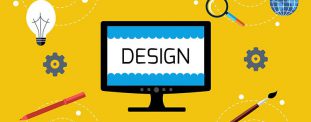To excel in one’s work, is often one of the biggest dreams of a person, right? Be it an artist, or player, or mason, or manager, or doctor or even a robber for that matter- everyone drives their skills to reach the finest point of excellence. But often, we are not able to do this work to our best levels, due to the inevitable and unforeseen hindrances that come in our workflow. On this page, you are about to understand what challenges in work often go unnoticed and how much of our time- goes waste with such lags.
To start work, if you are a coder, you may be effectively carving out codes for the company. But in the midst of that code of work, you may have to talk to someone, attend a meeting, troubleshoot something, train someone or perhaps even send or read an mail. Sounds familiar? Well, those are the unnoticed hitches in our workflow and they may lessen our efficiency. The research below explains how you can maximize your work, with a better design through deeper thinking.
The Switch could be troublesome
As per research observations, it has been found that we often shuttle between small errands. It could be taking note of a doctor’s appointment, or even troubleshooting, or figuring out new code or design. The problem is not when you do the work, but when you have to get ‘back’ into your original route of work. The research shows that our human brain focuses on a particular activity at a certain point in time. So if you are in the midst of planning out a project, and you get a phone call- your mind would be still lingering on the unfinished task.
This would make the brain less attentive to the next task. Also, after the phone call, people find it difficult to switch back to the project planning schedule. They would take a couple of minutes to track out where they had left off. This could create a lot of mental strain and loss of precious time. So, the transitions from one job to another or rather the switch could cause the brain a lot of os stress in the long term.
The researchers call this as ‘Attention Residue’ as the person would be still silently giving attention to the work they had left off awhile ago.
Solution: If such attention residue needs to be reduced, work should be structured in a manner that reduces the interruptions in your day to day work. For this, people need to sort out which work based on- which work needs more attention, which works is more time- consuming and which work can be delayed if needed.
More attention-related works: This could be planning, talking with a team, brainstorm, ing sessions on a new project and so on.
Less attention-related works: From reading emails to updating performance reports, these fall in the list of less attention-related works. Most people check mails every 10 minutes or so, creating a lot of disturbance in their workflow.
Research Finding: Spend more time for More attention works and less time for Fewer Attention works.
If you spend more time to think more deeply into work that needs your complete attention that would yield a better outcome and a better design on workflow.
Five Must-Know Tips to have a Flawless, Result Oriented Work Flow Daily
To have a balanced workflow every day is no easy task, and that is why we love to tell you practical secrets on how to make it possible.
Perfect the Art of Designing
If you are into a mission of mastering the art of perfection in any job you do – like designing, coding, artwork, etc, then you first need to write down what needs to be done, and what needs to be avoided. For example, you can make a personal resolution to not take the phone while you dedicate about four hours just to get your creative juices to the max levels.
Question your brain
A lot of thoughts means that you need to put your brain to test. You need to ask your brain what problems need an immediate solution and also the best way to solve a certain issue. Take each challenge specifically and do your best. Think deep and make sure you give it your best efforts to achieve results in the shortest period possible.
Schedule your mental wander time
There are chances that a project gets too frustrating, or boring, or probably there are those hectic moments when you run out of options to work upon- give the brain a rest and let it wander away. Schedule this time, to do less attention works. You can call people, check emails, do shopping during this slot of time. It will beat the boredom and also refresh your thoughts. Wandering is good for an effective worker, but make sure you do not wander off every odd hour of the day.
Stop Being Unfocussed
You need to know what exactly you are doing, why you are doing work and also the end result of the work. If you do not have a clear cut idea of that, probably you would derail from your focus of thoughts and get engaged in less important work. That would make you less fruitful and result oriented. Stick to plans and make sure that you follow it.
Segregate work that needs more and less attention
There could be several unfinished works lying at your office table. Choose which needs the most and immediate attention. If you work in such a vision filled manner, the chances of you being more productive are much higher.
Such tactics mentioned above are particularly useful for people who work in fields like software development, media designing, communication, project management, and so on. These areas need a lot of thought into an idea, and if done well, they open the door to results very fast.

